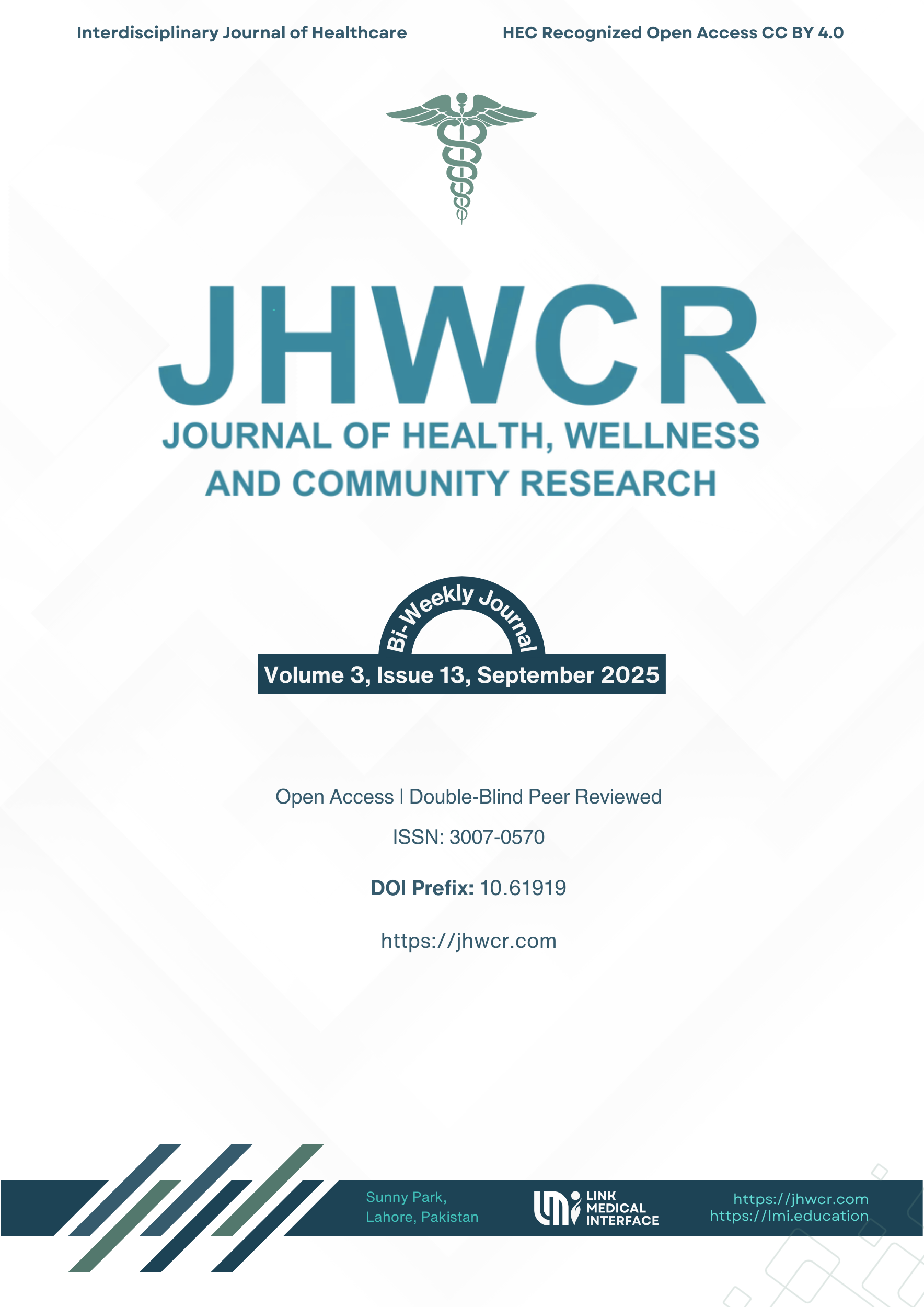Comparative Effects of Aerobic and Resistance Exercise Training on Lipid Profile and Cardiovascular Health in Obese Young Adults: A Randomized Controlled Trial
DOI:
https://doi.org/10.61919/9sdkd928Keywords:
Obesity; Aerobic exercise; Resistance training; Lipid profile; Cardiovascular health; Young adults.Abstract
Background: Obesity contributes significantly to global cardiovascular morbidity through lipid dysregulation and hemodynamic stress. Exercise interventions are widely recognized as non-pharmacological strategies to mitigate such risks; however, the relative impact of aerobic versus resistance training on lipid metabolism and cardiovascular function in obese young adults remains inadequately defined, especially within South Asian populations. Objective: To compare the effects of aerobic and resistance exercise training on lipid profiles and cardiovascular parameters among obese young adults. Methods: Sixty obese participants (BMI 25–34.9 kg/m²; age 18–30 years) were randomized equally to aerobic or resistance exercise groups for 12 weeks. The aerobic group performed treadmill and cycling at 60–75% maximum heart rate, while the resistance group underwent progressive overload training at 60–70% one-repetition maximum. Total cholesterol, LDL-C, HDL-C, triglycerides, blood pressure, and resting heart rate were assessed at baseline and post-intervention. Data were analyzed using paired and independent t-tests (p < 0.05). Results: Both groups showed significant within-group improvements; aerobic training achieved greater reductions in total cholesterol (−25.8 mg/dL), LDL-C (−18.3 mg/dL), and triglycerides (−28.7 mg/dL), and a higher HDL-C increase (+6.2 mg/dL), while resistance training showed superior systolic blood pressure reduction (−9.3 mmHg, p = 0.039). Conclusion: Aerobic and resistance exercise independently enhanced cardiometabolic health, with aerobic exercise providing superior lipid benefits and resistance training optimizing blood pressure regulation. A combined regimen may maximize cardiovascular protection.
Downloads
Published
Issue
Section
License
Copyright (c) 2025 Saima Ashraf, Adeel Khalid, Muhammad Anees, Sahar Imnan, Ayesha Ijaz (Author)

This work is licensed under a Creative Commons Attribution 4.0 International License.


